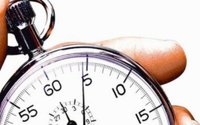Commentary
Beacons Determine Best Time To Send Ads, ID When Shopper 'Due' For Store Visit
- by Chuck Martin , Staff Writer, May 10, 2016
 Beacons were always good at being
able to trigger a message or ad based on a consumer’s location, but now they’re being used to better predict exactly when that message should be sent.
Beacons were always good at being
able to trigger a message or ad based on a consumer’s location, but now they’re being used to better predict exactly when that message should be sent.
And based on recent testing, it looks like adding the right time into the purchase cycle can actually increase purchase intent.
In a campaign for Bona Hardwood Floor Cleaner, such a targeting campaign achieved 55% average brand awareness, 25% post-engagement purchase intent and 3 times ROI, according to data from InMarket, the beacon platform company, and digital agency Crescendo Collective.
The companies are essentially creating predictive mobile ads, identifying when a person is due for their next store visit and then serving a brand’s ad based on past beacon-triggered data.
InMarket is using beacon data and time to determine when shoppers are likely to go back to the store.
Relevant ads then can be delivered via aps, desktop or mobile websites, before or during the store visit.
Rather than being used only for targeting shoppers in stores, beacons are being used to gather data that then can be used throughout the entire purchase cycle.
Many beacons were initially used for on-the-spot messaging, as in a person walks to a different department in a store and instantly receives a message or an ad suggesting they check out a particular product nearby.
Studies have shown that many consumers are willing to accept location-based ads that are relevant to them.
The idea in the new approach is to reach shoppers when they’re most receptive to ads.
For example, a person who shops each Tuesday would likely be more receptive to relevant ads on Monday rather than on Wednesday.
The key, of course, is for the ads to be relevant.
And beacons can’t make that happen.



